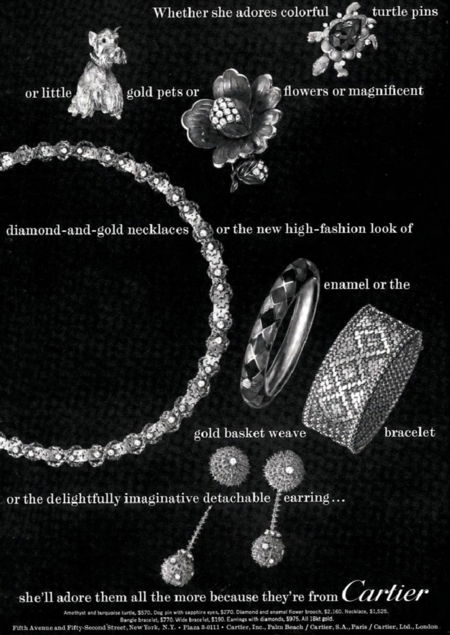They quickly became a collector’s item and have re-emerged as a classic design of the period, perhaps as a tribute to its symbolic significance of endurance, long life and perseverance.
An amusing set of three turtle brooches by Cartier, Paris, 1960s
Turtles featured prominently in Cartier's menagerie throughout the decade, interpreted in a variety of brightly coloured stones often in intricate gold corded wire settings.
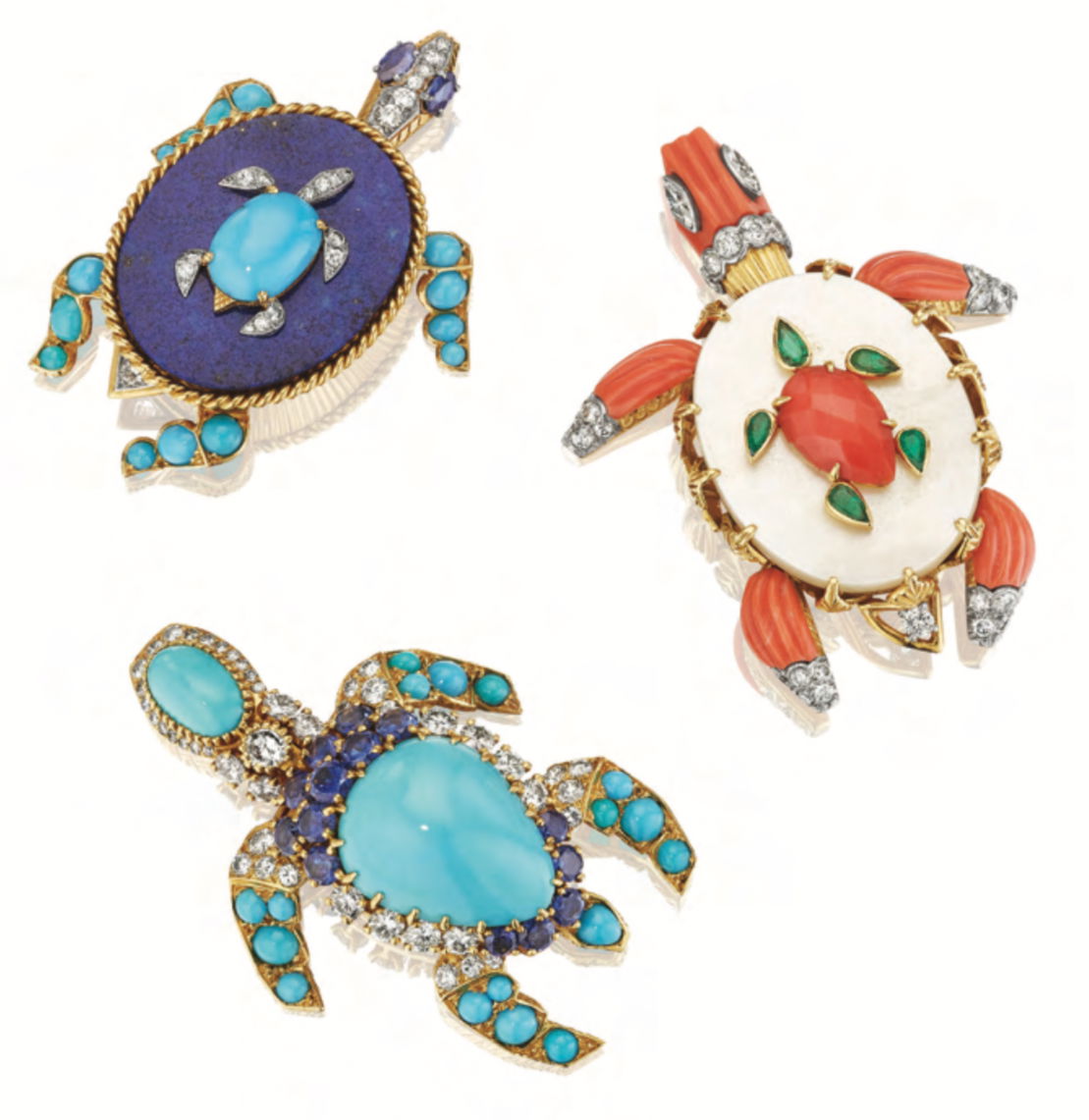
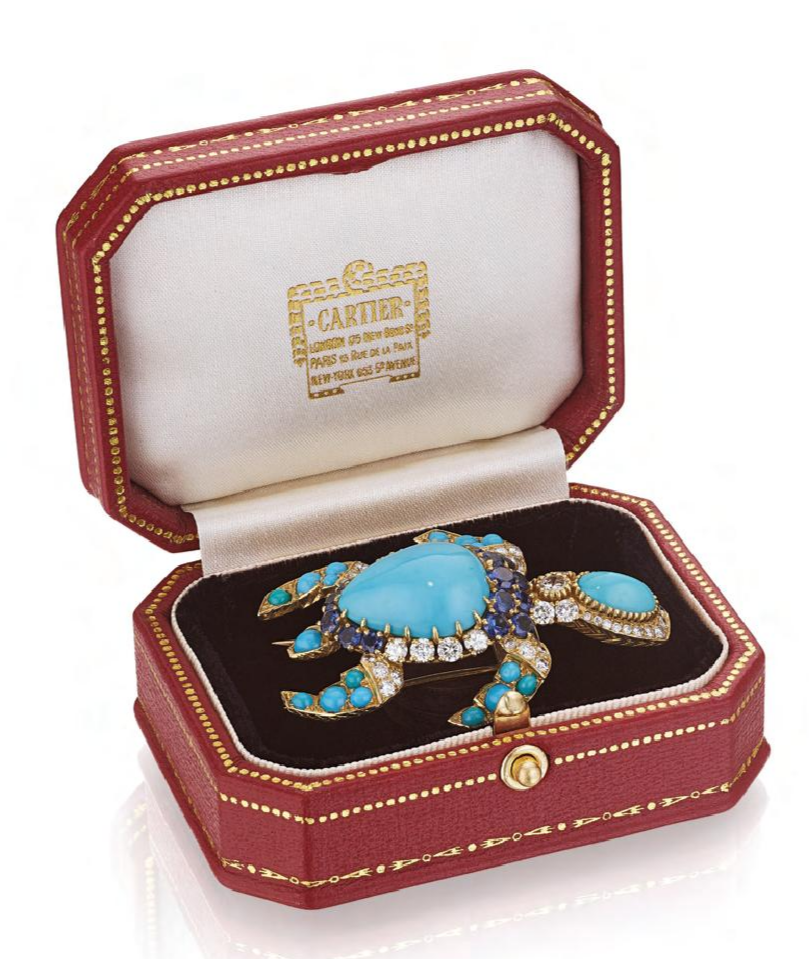
Wearing a number of brooches at the same time, even if they were not of matching design, has a long history, beginning at the end of the 19th century.
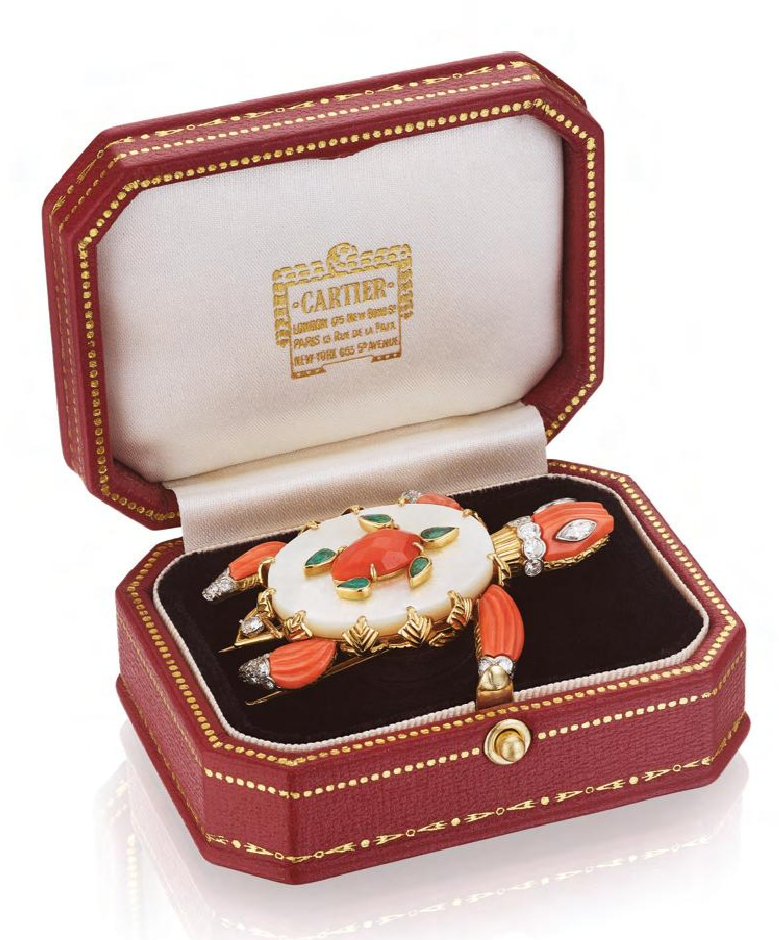
The fashion for wearing such jewels led them to be known as ‘scatter brooches’ and it has recently achieved a new momentum, making this versatile set particularly desirable and fun to arrange on the shoulder of a jacket or around the neckline of a dress.
Written by

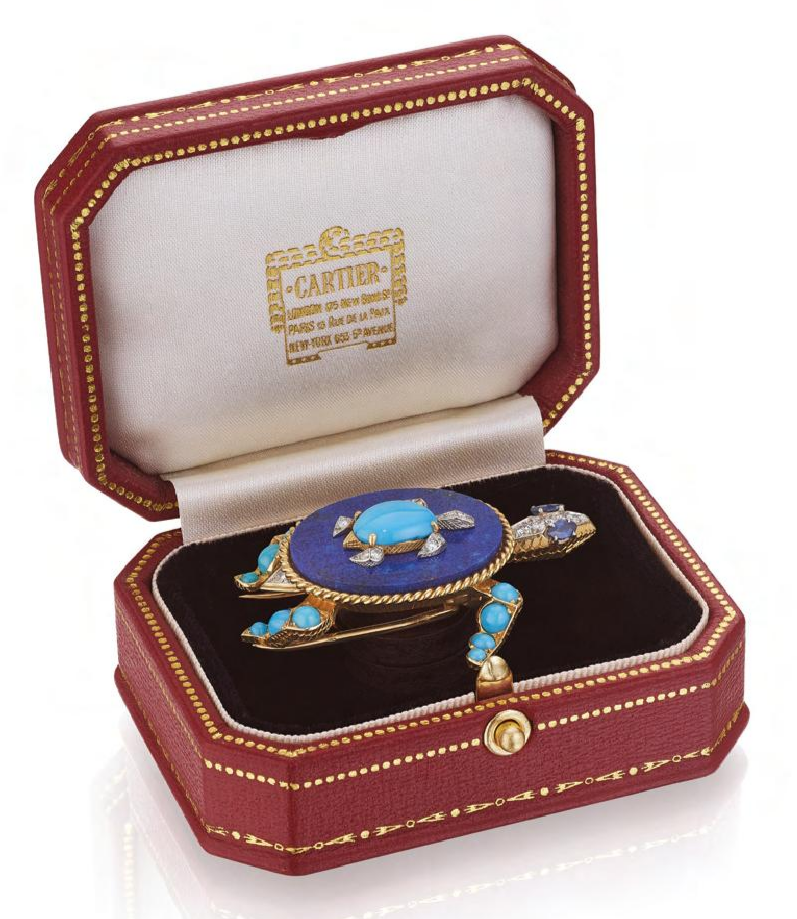
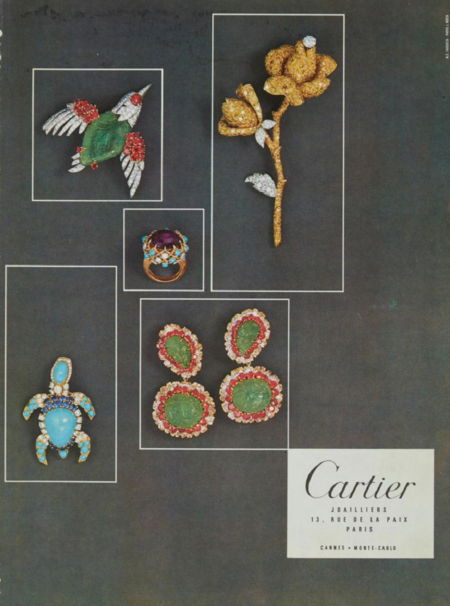
Further details:
A trio of turtle brooches, the first composed of a turquoise cabochon shell, fins, and head with diamond and sapphire accents; the second with a mother-of-pearl shell, fluted coral and diamond fins and head, supporting a baby turtle of faceted coral and emerald; the third with a lapis lazuli shell, turquoise fins, and diamond and sapphire head, supporting a baby with turquoise cabochon shell and diamond fins; mounted in 18-karat gold and platinum, with French assay marks, in boxes
– Each signed Cartier Paris and numbered
– Each measuring approximately: 2 1/4 x 1 1/2 x 3/4 inches
LITERATURE:
L’Officiel de la Couture et de la Mode, no. 549, December 1967
For further information on Cartier’s turtle brooches: info@understanding-jewellery.com
